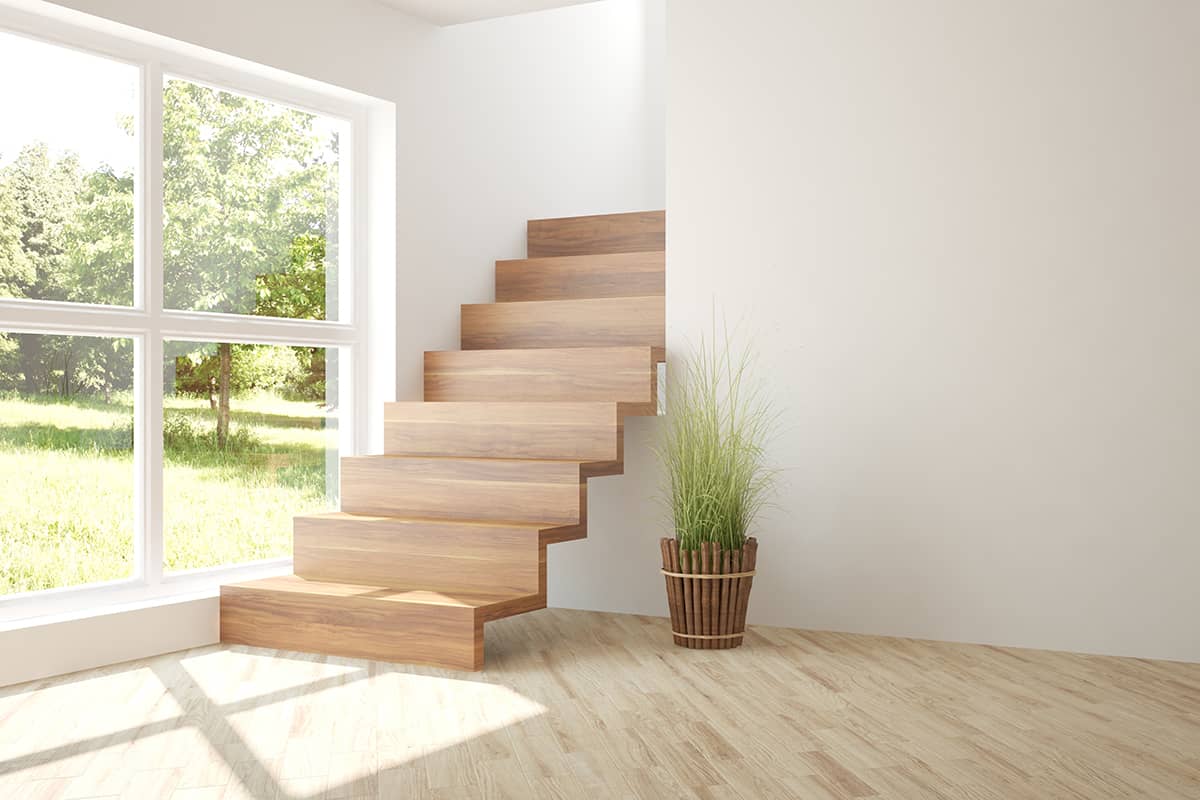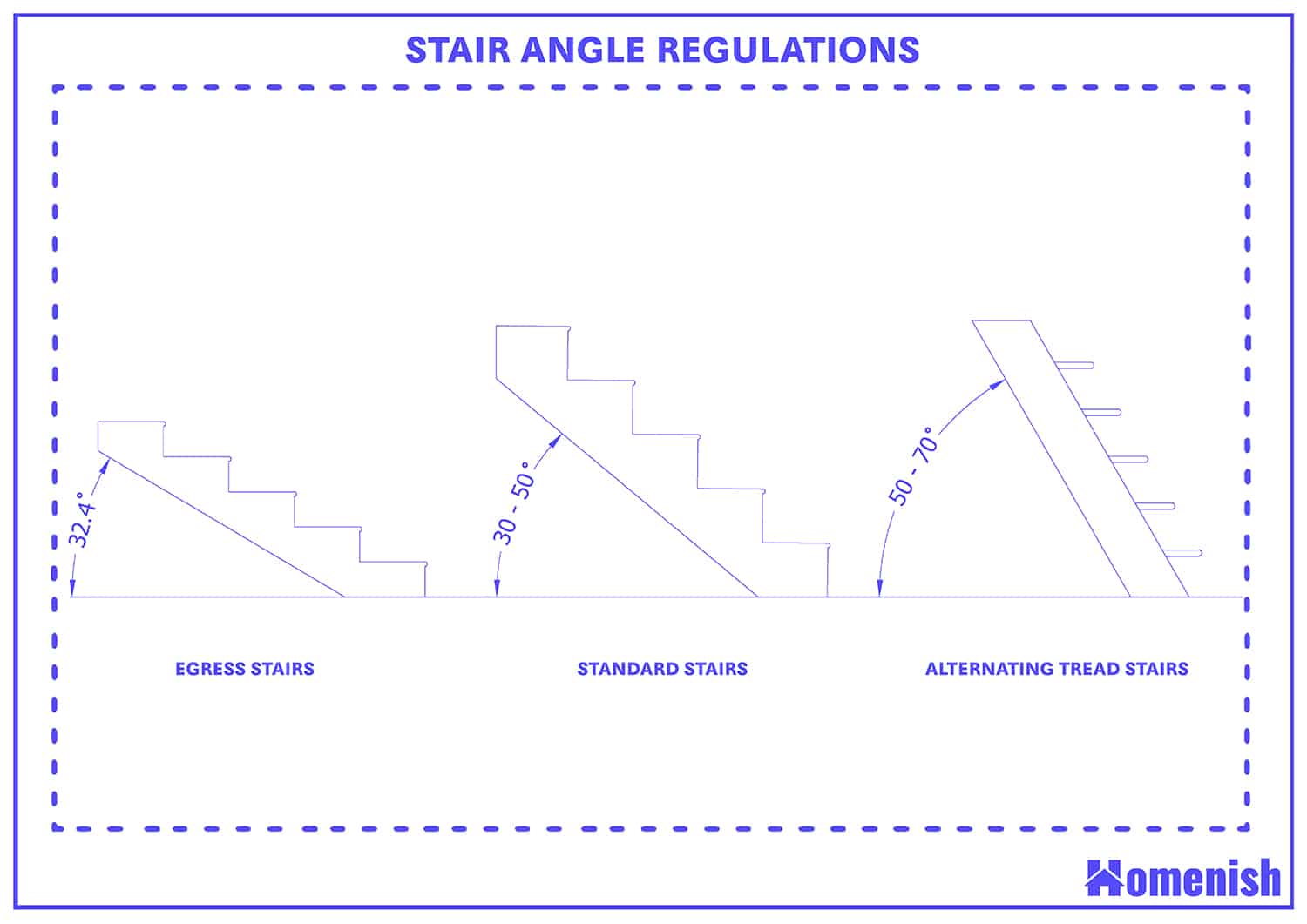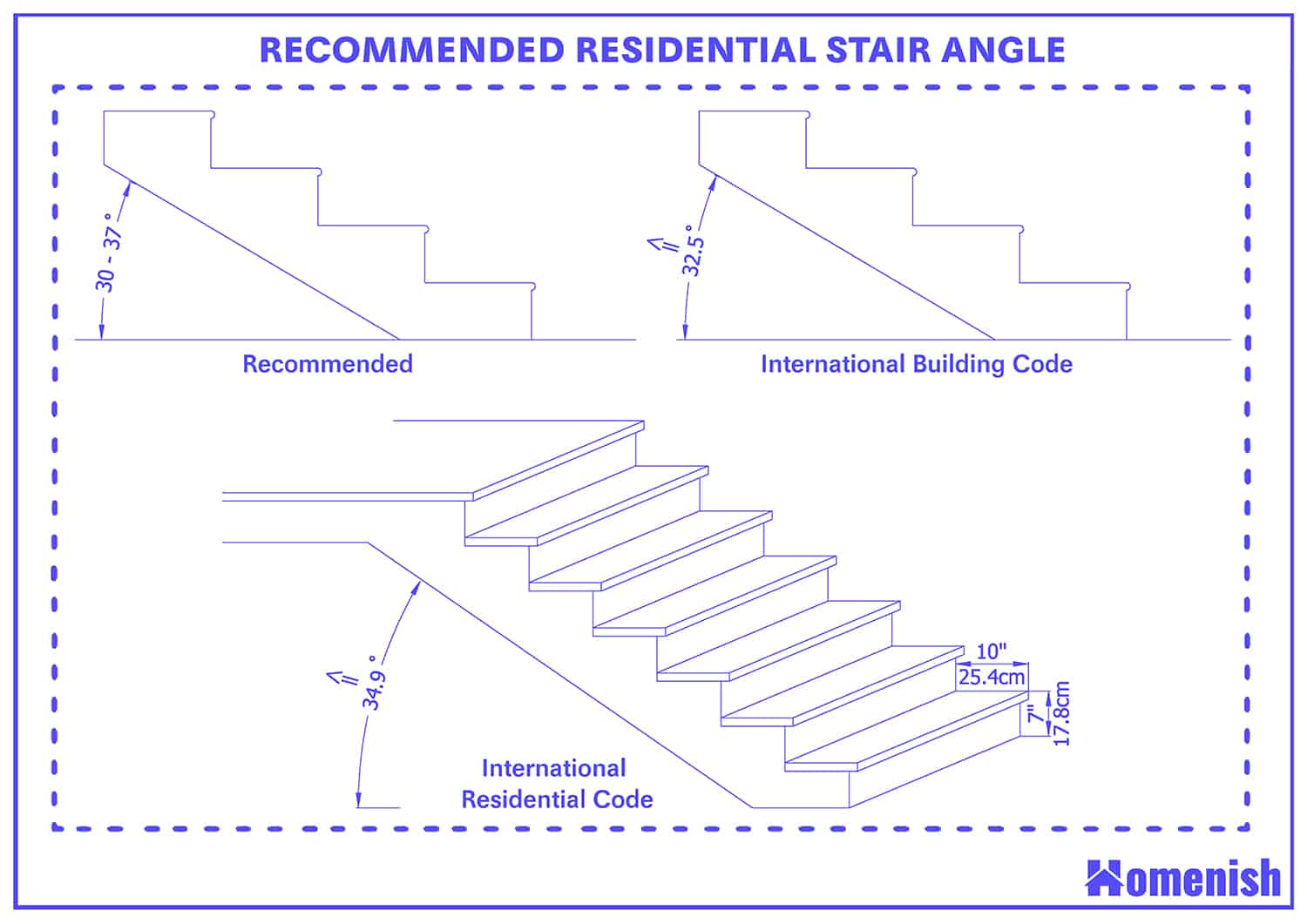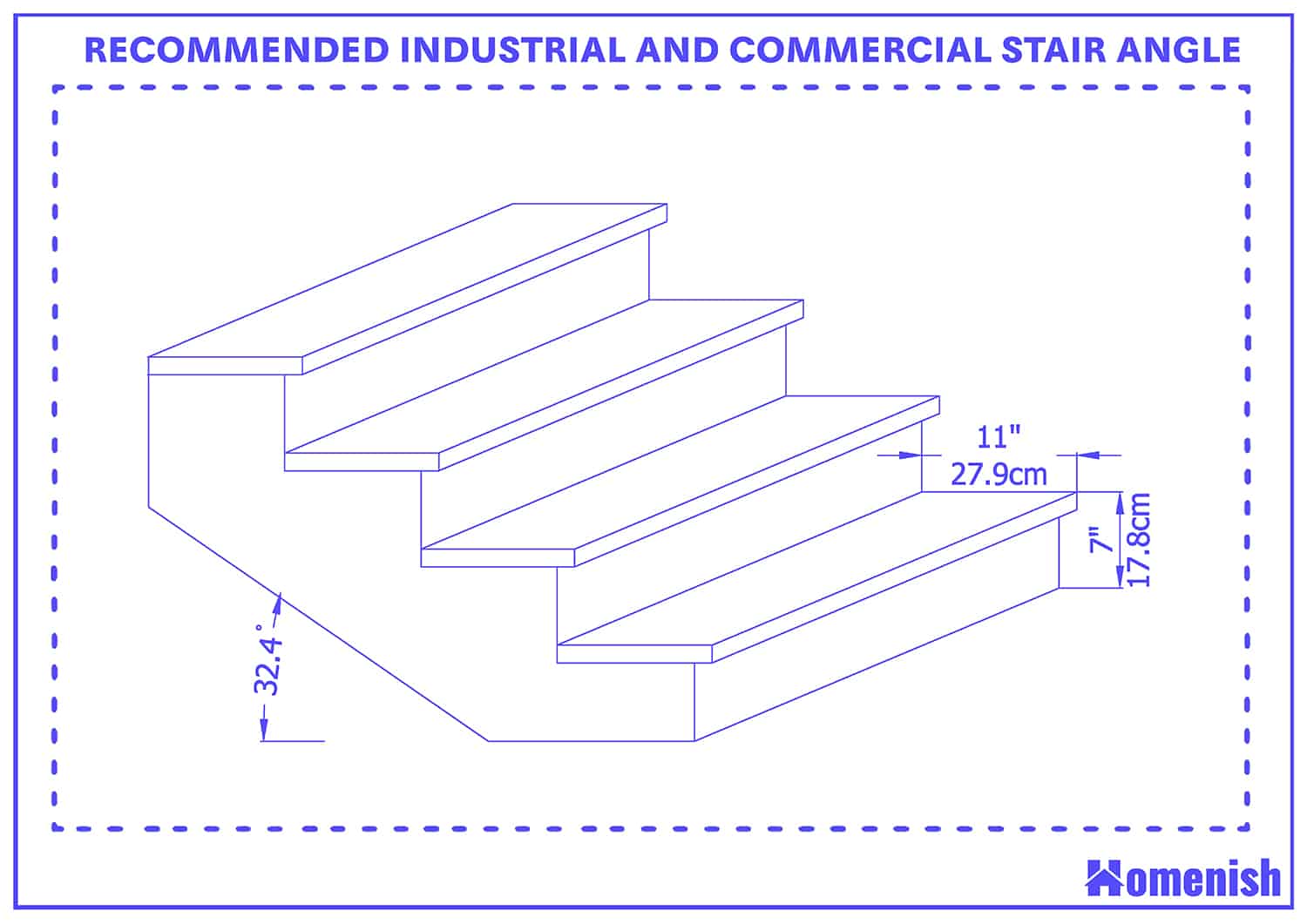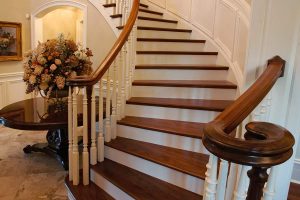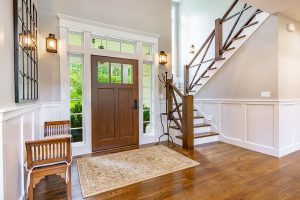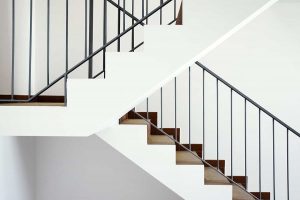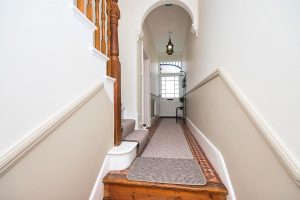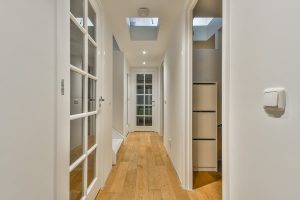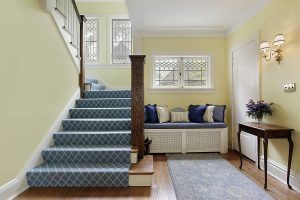When building a staircase you will need to decide on an appropriate stair angle. This is important because it greatly impacts the overall safety of the stairs, since the stair angle will dictate both the depth of the treads and the height of the risers.
Shallow treads and taller risers can make stairs more difficult, and more dangerous to use, so this should be taken into account. Here we will look at the standard stair angles for various types of stairs, and which angle will be the safest and most functional in different applications.
Stair Angle Regulations
The type of stairs you are constructing, and the setting where they are to be used, will affect the regulations you have to follow.
For workplace staircases, if you want to be Occupational Safety and Health Administration compliant, standard stairs will need to have an angle of between 30 and 50 degrees, while alternating tread stairs and ship ladder stairs can have an angle of between 50 and 70 degrees to meet the requirements.
To be compliant with International Building Code, egress stairs should have a pitch of 32.4 degrees.
Recommended Residential Stair Angle
The recommended angle for stairs in residential properties is between 30 and 37 degrees, although an incline of between 30 degrees and 50 degrees is acceptable. The International Building Code recommends that residential stairs have a pitch of no more than 32.5 degrees.
If your building needs to meet the requirements set by the International Residential Code, then your treads will need to be a minimum of 10 inches in depth, with stair risers which are 7 inches high. This will mean that the maximum angle of the stairs would be 34.9 degrees, or shallower if you opted for deeper stair treads.
When planning the angle for your stairs, take into account how this is going to affect the stairs as a whole. Many people want to opt for steep stairs in an attempt to save space, as the greater degree of incline on a staircase means the less space it will take up.
However, the more steep a staircase is, the higher the rise between each tread will be, and the shallower each tread will be. Both of these things can make the stairs more effort to use, and can increase the risk of accidents.
When deciding on a stair angle you will want to balance out the importance of space saving stairs versus the importance of safe stairs. The type of people who are going to use the stairs should be a consideration, for example if an elderly couple or a family with young children inhabit a home then the safety of the stairs will be paramount.
Stair Tread Size
The size of your treads and the pitch of your stairs are two measurements that go hand in hand.
If you want a steep angle to your stairs then you will have to have very narrow treads, and if you want large, deep treads then you will have to have a shallow pitch. Tread size is important because it is the flat surface that accommodates your foot as you climb up or down the stairs.
The more of your foot that is supported by the tread, the less likely you are to stumble or fall while using the stairs. It is for this reason that most building codes require a standard stair tread depth is a minimum of 10 inches. This will accommodate the foot size for the vast majority of people, ensuring a high level of safety and reducing the incidence of accidents.
In certain applications, the tread depth can be more shallow, for example, with ship ladder stairs, in which case the overall incline can be steeper.
Recommended Industrial and Commercial Stair Angle
The angle of the stairs can be different depending on the application the staircase is intended for. The International Building Code stipulates that workplace staircases should have stair treads which are a minimum of 11 inches in depth and stair risers that are a maximum of 7 inches high. This would make the angle of the staircase 32.4 degrees.
However, the Occupational Safety and Health Administration stipulates that standard stairs in workplaces can be between 30 and 50 degrees, while steep stairs such as alternating tread stairs can have an angle of between 50 and 70 degrees.
Alternating Tread Stair Angles
Alternating tread stairs are commonly used in workplaces or domestic settings where steep stairs are required to take up less space. They feature treads that are half the full width of the staircase, which creates more space at a steeper angle to make the staircase safer.
Common places where you will find alternating tread staircases are for access to a loft conversion, or in an office.
The angle of this type of staircase can be between 50 degrees and 70 degrees according to the Occupational Safety and Health Administration; however, for the safest and most comfortable use, a pitch of between 56 and 68 degrees is ideal.
Ship Ladder Stair Angles
Ship ladders are a type of staircase commonly seen on ships, which is so steep that it resembles a ladder more so than stairs, hence the name ‘ship ladder’.
These are other types of steep staircases that can have a pitch of between 50 and 70 degrees according to the Occupational Safety and Health Administration; however, the International Building Code recommends that ship ladders have a pitch that does not exceed 63 degrees.
The tread on these stairs will be so narrow that you cannot get much of your foot onto it, and therefore the user relies on the handrail and their arm strength to get up and down the stairs.
It is recommended that a person descending these stairs would do so backward, with their back facing the bottom of the staircase. These stairs are designed to take up minimal space, and so they will be installed at the shallowest angle, which will work in the designated area.
